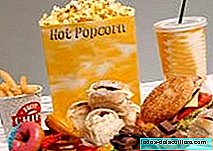
According to data from the School Survey on Drugs / 2010 of the National Drug Plan 3.5% of students between the ages of 14 and 18 have tried one or more psychoactive substances in their lives, of those that were included in the 'emerging drugs' module when conducting the 2010 School Survey on Drugs. Magic mushrooms, ketamine and 'Spice' are the most consumed substances among this population group.
These data were indicated by the Government delegate for the PNsD, Núria Espí during the presentation of the report on “Emerging Drugs”.
The report reviews the definition and classification of these types of drugs, most common forms of presentation and consumption and details the early warning system in Europe, which can be activated from any country. This system implies an immediate warning to the national authorities of each of the EU countries about the appearance of a new drug or a new form of consumption and its effects on health. It is quite worrying that children with 14 years of age may have access to drugs for which there is not much information available especially in regard to its effects. It is obvious that The "market" of psychoactive substances is diversified and introduced into young people through easily accessible channels for themTherefore, now more than ever it becomes necessary for fathers and mothers to be informed.
The effects of emerging drugs are as varied as their origin and composition. A large majority can be considered psychostimulants and produce hyperactivation of the central nervous system with cardiovascular repercussion, which can be aggravated by the increase in body temperature secondary to physical exercise by dancing and other factors related to the characteristics of leisure venues. Others have depressing effects on the central nervous system, or a mixture of both, and in a third group are those that cause hallucinogenic effects.
The report also notes that Under the effects of any of these substances, aggressive and risky behaviors can be developed, such as driving recklessly or having unprotected sex. Some substances such as GHB or ketamine are considered, in some countries, as facilitating substances for the commission of sexual crimes.
Internet plays a leading role in the promotion, distribution and sale of so-called 'emerging drugs'. Therefore, the editors of the text consider the implementation of Measures to protect the public health of the population and the use of the network as a platform for raising awareness and information on the risks of the consumption of these substances to potential consumers.
Experts point out the difficulty of defining the concept of emerging drugs, which include a large, changing and very diverse group of natural, synthetic or semi-synthetic substances, known or unknown, used for different purposes, which have appeared or reappeared in the market. as an alternative or complement to traditionally consumed drugs, whose effects mimic or overlap. Many of them are not subject to legal restrictions at national and international levels. Among the 'emerging' drugs cited in the report, are the following. Amphetamines, piperazines, pyrrolidiphenones, ketamine, 'Spice drugs' and GHB / GBL. The text also dedicates a chapter to substances of abuse of plant origin, such as ayahuasca, iboga, sap, hallucinogenic mushrooms, peyote, khat, betel, kawa kawa, ololiuqui and Solanaceae plants
Emerging drug use shows a higher prevalence in the young population between 15 and 34 years. It is associated with nightlife, music and dancing, although in recent years there has been an increase in solo consumers seeking to experience new sensations.
According to the United Nations Office on Drugs, amphetamines are the second most widely used drug in the world, behind cannabis. The type of drug used differs from one country to another. In Northern and Central Europe, amphetamines and their derivatives are the most prevalent substances, compared to what is registered in the countries of southern and western Europe, where cocaine predominates.
Nuria Espí insisted on the need to intensify social information and awareness campaigns against these substances. In this regard, he has advocated prevention. "There is no effective treatment for abuse and addictions to amphetamine-type stimulants," said the Government delegate for the National Drug Plan.
I completely agree with Mrs. Nuria Espí when she talks about the need to perform prevention, parents should not delegate this function to school or other institutions, because along with the information is the only way we have to help our children to develop a critical spirit and a good criterion that will help them deal with consumer-oriented offers. On other occasions I have commented it but I repeat again that during adolescence it is possible to be oneself fitting (in turn) in the reference group.












